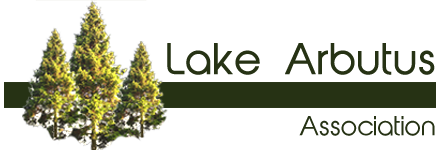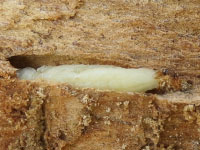Emerald Ash Borer (EAB)
 Emerald ash borer (Agrilus planipennis) is an invasive, wood-boring beetle that kills ash trees (Fraxinus spp.) by eating the tissues under the bark. Native to northeastern Asia, emerald ash borer (EAB) was first detected in the United States in 2002 and is thought to have been introduced from China via the wood from shipping crates. Emerald ash borer (Agrilus planipennis) is an invasive, wood-boring beetle that kills ash trees (Fraxinus spp.) by eating the tissues under the bark. Native to northeastern Asia, emerald ash borer (EAB) was first detected in the United States in 2002 and is thought to have been introduced from China via the wood from shipping crates.An estimated 898 million ash trees are in Wisconsin's forestlands as part of northern hardwood, oak-hickory and bottomland hardwood forests. Ash species represent 3.9% of all trees in Wisconsin’s forests (counting all live trees 1-inch in diameter or larger). Black ash is the most common ash species and represents 4.0% of total tree density. White and green ash represent 2.0 and 1.8% of total tree density, respectively. Read more about Wisconsin’s ash resource [PDF]. EAB attacks all native species of ash in Wisconsin, including white, green, black and blue ash. While other woody plants, such as mountain ash and prickly ash, have “ash” in their names, they are not true ash species and therefore are not susceptible to attack by EAB. True ash trees provide many ecological benefits: their seeds provide food for birds and small mammals; black ash twigs and leaves provide food for deer and moose; and trunk cavities provide nesting areas for birds such as the wood duck. Ash is also valuable to Native Americans for its excellent basket-making quality and cultural importance. See where EAB has been found in Wisconsin |
||
|
 Emerald ash borer (Agrilus planipennis) is an invasive, wood-boring beetle that kills ash trees (Fraxinus spp.) by eating the tissues under the bark. Native to northeastern Asia, emerald ash borer (EAB) was first detected in the United States in 2002 and is thought to have been introduced from China via the wood from shipping crates. Emerald ash borer (Agrilus planipennis) is an invasive, wood-boring beetle that kills ash trees (Fraxinus spp.) by eating the tissues under the bark. Native to northeastern Asia, emerald ash borer (EAB) was first detected in the United States in 2002 and is thought to have been introduced from China via the wood from shipping crates.An estimated 898 million ash trees are in Wisconsin's forestlands as part of northern hardwood, oak-hickory and bottomland hardwood forests. Ash species represent 3.9% of all trees in Wisconsin’s forests (counting all live trees 1-inch in diameter or larger). Black ash is the most common ash species and represents 4.0% of total tree density. White and green ash represent 2.0 and 1.8% of total tree density, respectively. Read more about Wisconsin’s ash resource [PDF]. EAB attacks all native species of ash in Wisconsin, including white, green, black and blue ash. While other woody plants, such as mountain ash and prickly ash, have “ash” in their names, they are not true ash species and therefore are not susceptible to attack by EAB. True ash trees provide many ecological benefits: their seeds provide food for birds and small mammals; black ash twigs and leaves provide food for deer and moose; and trunk cavities provide nesting areas for birds such as the wood duck. Ash is also valuable to Native Americans for its excellent basket-making quality and cultural importance. See where EAB has been found in Wisconsin |
||
|



